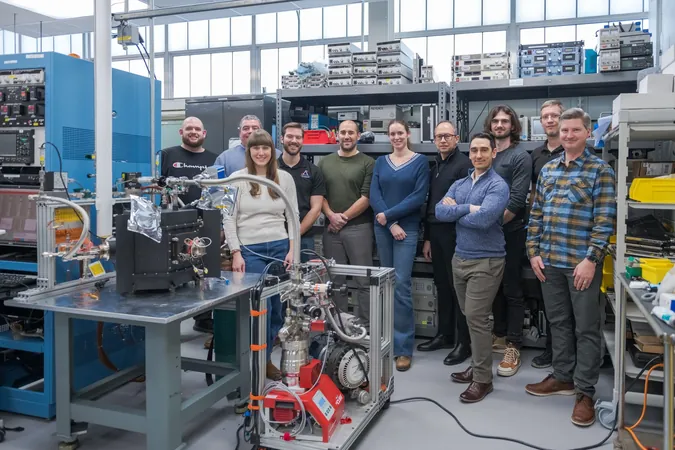
Revolutionizing Space Travel: A Game-Changing Fuel for Future Missions to Mars and Beyond
2025-07-23
Author: Charlotte
Powering the Next Frontier of Space Exploration
As humanity sets its sights on exploring Mars, Venus, and other distant worlds, robust power systems are becoming essential for spacecraft. With plans to return astronauts to the Moon and venture further into the cosmos, efficient energy sources are crucial for powering instruments and propulsion systems, ultimately speeding up transit times. Enter NASA’s innovative Radioisotope Power Systems (RPS), a technology that has fueled exploration for over six decades, powering rovers like Curiosity and Perseverance on Mars and the upcoming Dragonfly mission to Titan.
A Potential Crisis in Fuel Supply
However, NASA is facing a critical challenge: a looming shortage of plutonium-238, the current backbone of RPS technology, due to its production halting in the wake of the Cold War. As stockpiles dwindle, NASA is exploring alternative sources of energy. Fortunately, a path forward has emerged through a collaboration between the Thermal Energy Conversion Branch at NASA's Glenn Research Center and the University of Leicester, which is investigating Americium-241 as a promising substitute.
Innovative Research Paves the Way
For over 15 years, the University of Leicester has spearheaded the development of Americium-powered RPS units. Since their collaborative agreement in January, researchers have been working alongside NASA to assess the performance of a Stirling generator testbed using Americium-241 simulators. This partnership has brought together innovative ideas and technologies, resulting in a cutting-edge test station at NASA Glenn.
A Breakthrough in Reliability and Efficiency
Highlighting the resilience of the Americium-Radioisotope Stirling Generator, Hannah Sargeant, a research fellow at the University of Leicester, notes that the design can withstand a failed Stirling converter without losing electrical power. This capability not only demonstrates robustness but also positions Americium-fueled RPS as a viable energy source for prolonged space missions lasting decades.
Global Competition in Space Exploration
The stakes are high, as other spacefaring nations like China are racing to send their astronaut crews to the Moon by 2030 and onto Mars shortly thereafter. They too are exploring Stirling engines for their nuclear power systems to fuel lengthy missions. Following a successful in-orbit test of a Stirling thermoelectric converter aboard the Tianhe core module of their Tianwen-1 space station, they are advancing their own Space Nuclear Reactor Power System (SNRPS) designs.
Next Steps in the Space Power Revolution
Determined to stay ahead in the space race, the NASA Glenn team is developing an upgraded version of their testbed that promises to be lighter and more efficient, preparing it for rigorous environmental testing. Mechanical engineer Salvatore Oriti remarked on the exceptional teamwork displayed throughout the project, stating, "We went from concept to prototype faster than ever before, benefiting from a strong synergy between our team and the University of Leicester's. We accomplished everything we set out to and more!"
With these advancements in nuclear power technology, the dream of exploring other planets is inching closer to reality, powering the next wave of human exploration beyond the stars.









 Brasil (PT)
Brasil (PT)
 Canada (EN)
Canada (EN)
 Chile (ES)
Chile (ES)
 Česko (CS)
Česko (CS)
 대한민국 (KO)
대한민국 (KO)
 España (ES)
España (ES)
 France (FR)
France (FR)
 Hong Kong (EN)
Hong Kong (EN)
 Italia (IT)
Italia (IT)
 日本 (JA)
日本 (JA)
 Magyarország (HU)
Magyarország (HU)
 Norge (NO)
Norge (NO)
 Polska (PL)
Polska (PL)
 Schweiz (DE)
Schweiz (DE)
 Singapore (EN)
Singapore (EN)
 Sverige (SV)
Sverige (SV)
 Suomi (FI)
Suomi (FI)
 Türkiye (TR)
Türkiye (TR)
 الإمارات العربية المتحدة (AR)
الإمارات العربية المتحدة (AR)